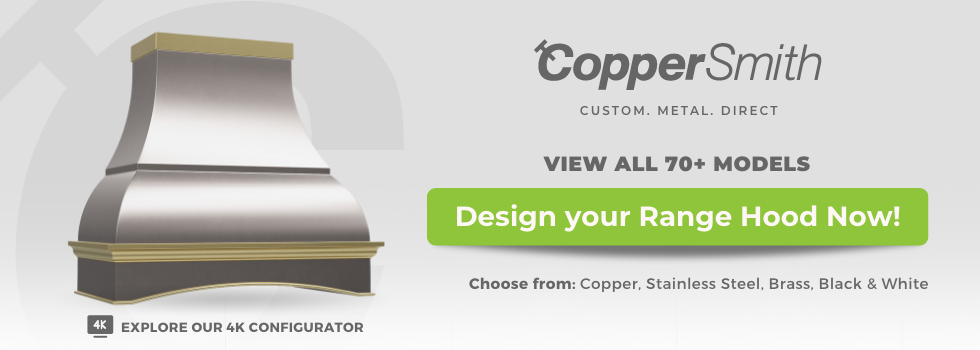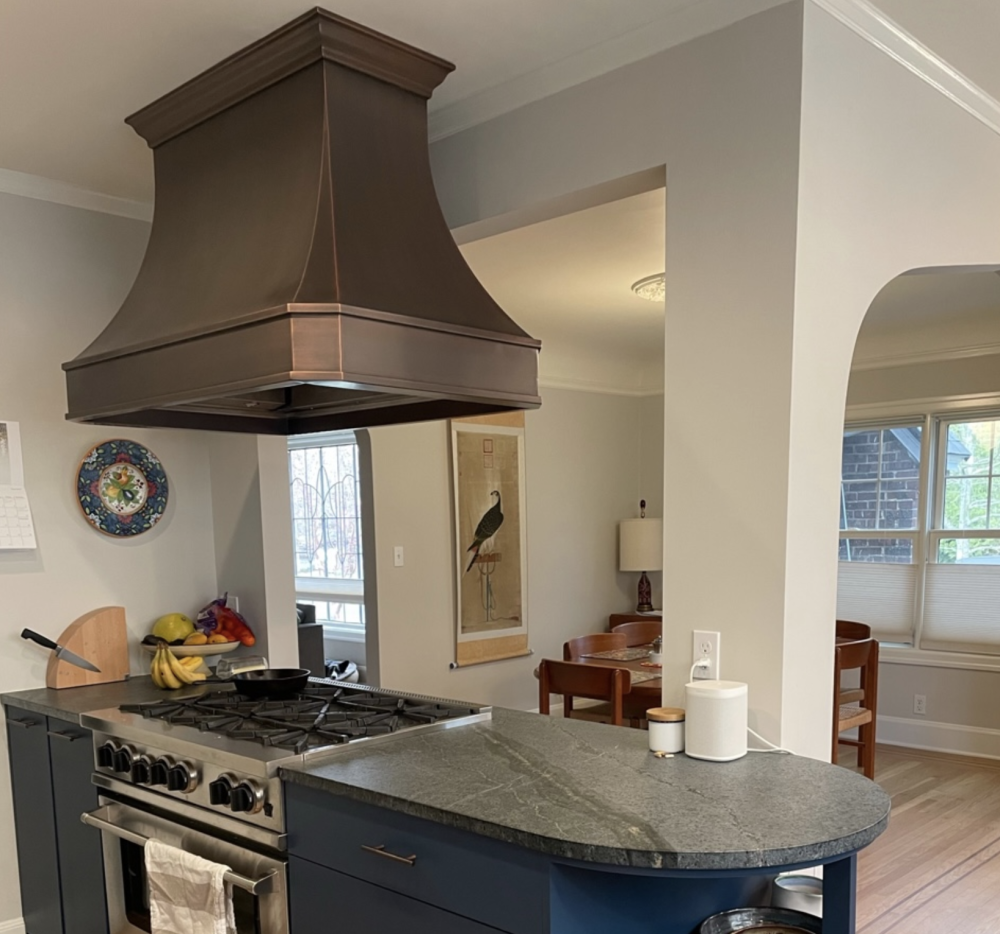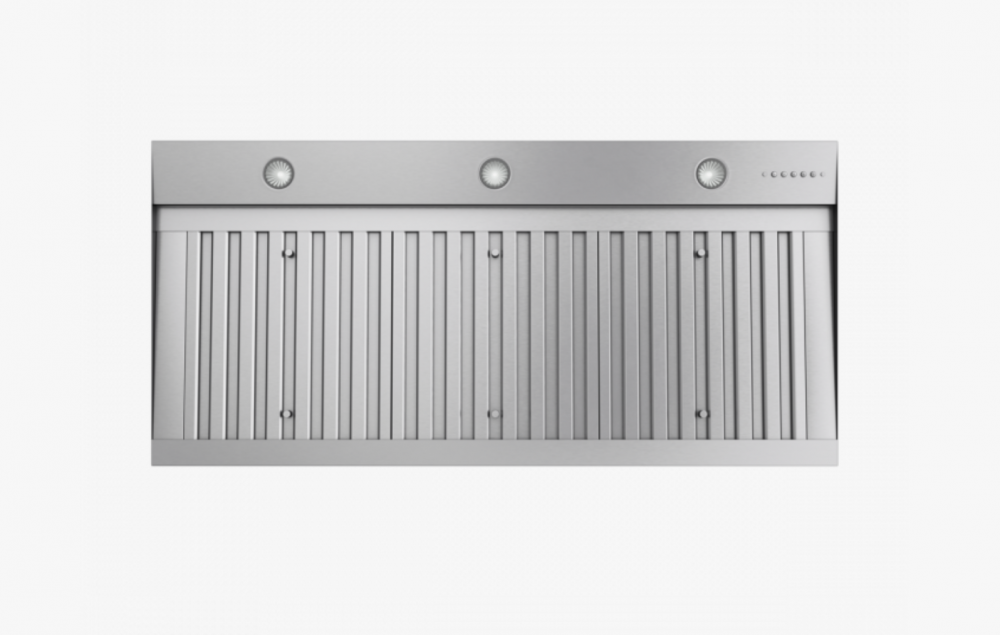When you’re renovating your kitchen, there are countless factors to consider. Eventually, you’ll need to decide between copper and brass range hoods. This device extracts your stove’s smoke, heat, and odors, so you don’t want to skip it altogether. However, if you can’t decide between copper and brass range hoods, you’ll appreciate knowing they’re equally effective.
The most crucial factor to consider when choosing a range hood is how it fits into your kitchen—both above the stove and aesthetically. While it’s easy to find range hoods that blend in with the oven, choosing copper or brass can help convey your style and give your kitchen a stunning focal point.
You can choose smaller, discreet range hoods that blend in with your kitchen design or something more substantial, resembling an awning or chimney. This type of hood will provide your kitchen with a stunning focal point. There are various styles of range hoods in both copper and brass materials.
Since you need a range hood for your stove, consider choosing one that looks great in your kitchen. Read on to learn more about each type of range hood so you can decide which is best for your kitchen.
Copper Range Hoods
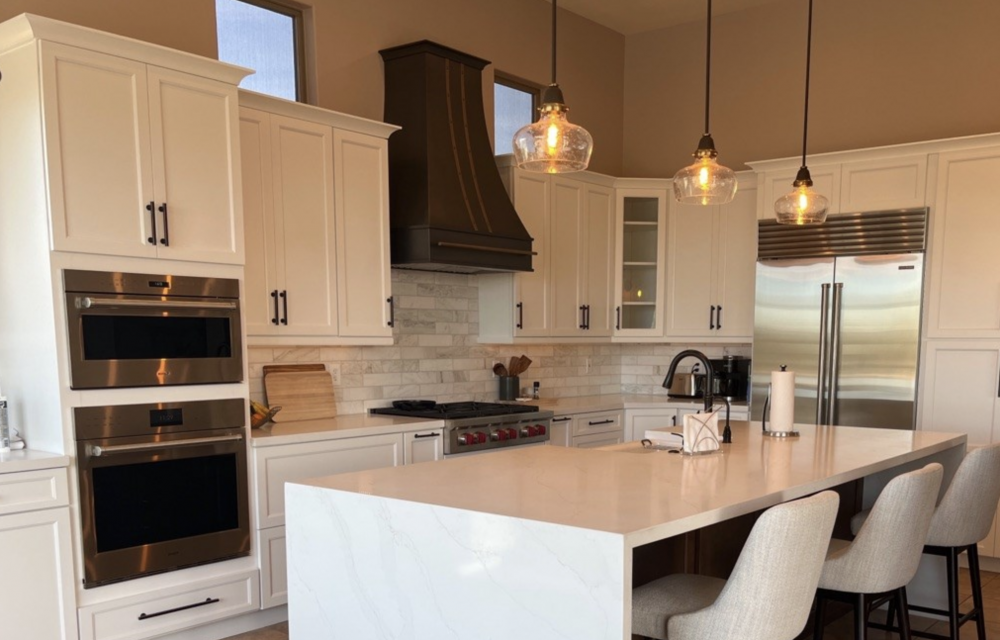
Many people like the crisp look of a copper range hood. They look elegant and make your kitchen appear more upscale than other materials. Copper naturally suits many kitchens, while brass can look too stark unless you have minimal colors in the space. Copper also brightens the room and makes it look bigger and warmer.
Copper oxidizes over time due to exposure to moisture and air. This process changes the look of your copper range hood, but many homeowners love the look of oxidation. It can take a bright, shiny copper range and make it look like a priceless antique passed down your family line. The copper color gets richer over time, giving your kitchen a rustic appeal.
Whether you let your copper oxidize or keep it polished, this metal looks great with other kitchen elements. The color and style naturally suit wood, steel, and granite countertops and cabinets. Even as it ages, the oxidized copper color will complement those other elements in the room.
If you plan on selling your house, a copper range hood is ideal because it improves your home’s resale value. It looks great in the kitchen and keeps that appearance even as it ages, so many buyers will love the look and appreciate that they won’t have to install a new, stylish option after they buy your home.
Copper is a durable metal that will last years when you consider its stability. It won’t show scratches much due to its strength and the oxidation process, so it will look like it’s in good shape for much longer than a brass range hood. Copper can self-heal scratches, so even if you see a scratch at one point, the material will mask it over time.
It’s easy to clean copper with a damp cloth, so wipe it periodically to prevent stubborn build-up. The surface of the metal has antibacterial properties, meaning it kills 99.9% of microorganisms within two hours of contact. When you regularly clean your copper range hood, you’ll ensure it maintains this quality and keeps your kitchen clean.
Brass Range Hoods
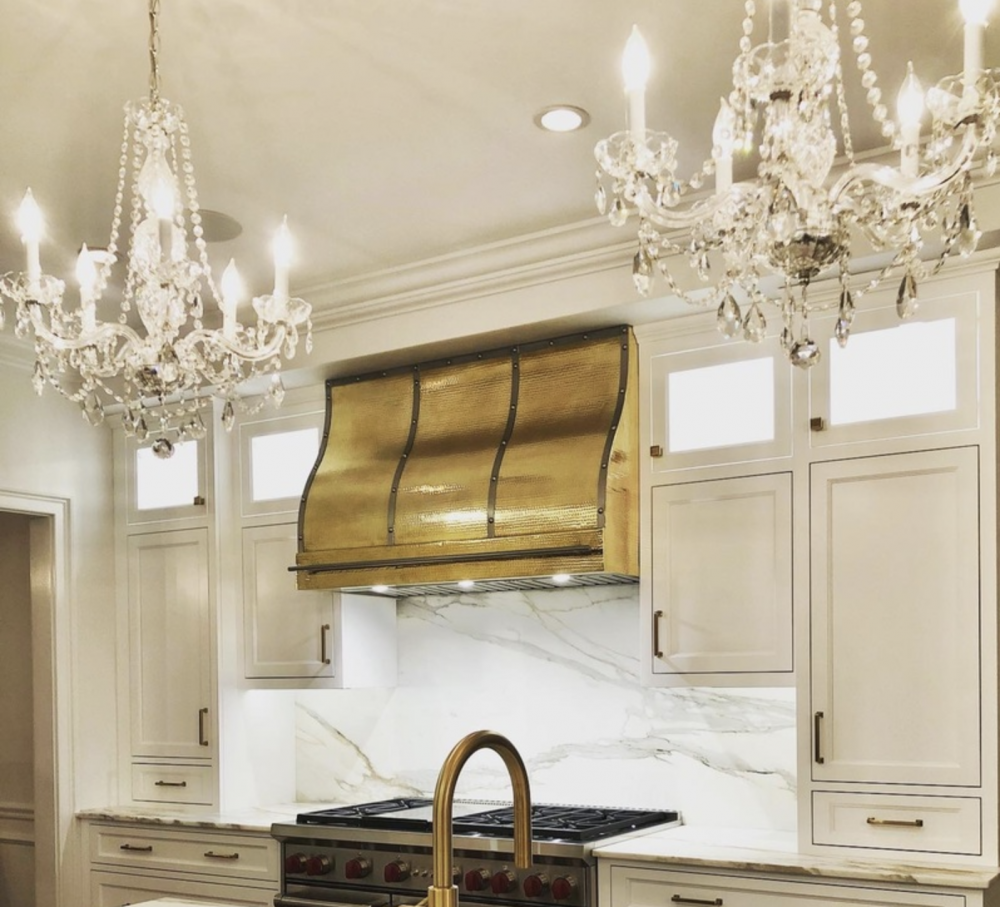
Many people choose brass range hoods because they’re more affordable than copper. However, you should consider your kitchen’s overall look to ensure this choice is right for your home. Brass may seem more affordable initially, but it requires more maintenance, cleaning, and repair, which can add to the overall cost.
Brass is a durable metal that will last for years in the kitchen. It may show more wear and tear than a copper range hood, but you don’t have to worry about it losing its effectiveness.
Though this material is durable, it’s also pliable. That means it’s easier to custom-design a range hood and use brass to get the right shape for your space. The ease of use also lowers the overall cost for a range hood because it takes less labor to make the item.
While copper range hoods oxidize over the years and develop a unique appearance, brass simply gets dull in time. It will fade with exposure to air and moisture. Since the range hood pulls oil and debris from the air, it will collect on the surface and further dull the brass. You can clean the brass, but it takes work, especially if there’s a protective lacquer coating.
Brass isn’t as antibacterial as copper, but it does have antimicrobial effectiveness. This quality will help keep your kitchen a healthy environment for your family to gather.
How To Choose the Best Range Hood for Your Kitchen
Though brass and copper seem like two of the biggest choices when it comes to choosing the best range hood for your kitchen, there are other factors to consider. Ensure you go through the following features to get an idea of what range hood would best suit your kitchen aesthetic, cooking needs, and budget.
Type of Range Hood
You need a range hood over your stove to pull heat, smoke, and grease from the air, so it’s a no-brainer to install one in your kitchen. However, there are different types you can choose, so understanding each style will impact your decision.
Under Cabinet Hoods
Under cabinet hoods are the most common, mounted below a high cabinet on the kitchen wall, above the stovetop. This installation allows for the ductwork to go inside the wall or ceiling and release the smoke and debris outside.
Since cabinets are typically half as wide as an oven, the under cabinet hood may have a flared opening that pulls smoke away from the front of the stove and pulls it up into the ductwork before it can leave a residue on the cabinet faces.
Island Hoods
Many modern kitchens have island cooktops so you can access all sides of the stove in the middle of the room. Since it’s not against the wall, the ductwork goes up through the ceiling to pull out the smoke and heat.
There are no cabinets helping contain the smoke with an island stovetop, so the hood should have a larger flared opening that helps funnel the heat in before it disperses through the room.
Wall-mounted Chimney Hoods
This type of range hood is an option for a range against the wall but without any cabinets above it. Instead of installing it against the base of the upper cabinets, you install a long chimney to the roof. The length extends down above the oven to pull the fumes into the ductwork.
Because wall-mounted chimney hoods are so big, they make a major statement in the kitchen. You’ll want to ensure you choose between copper or brass with this style to best suit the overall look of the room.
Size of Range Hood
You need to choose a range hood that suits the size of your stovetop. Hoods generally come in sizes between 30 to 66 inches wide. Ideally, your hood should be as wide as your cooking surface so it can easily funnel the heat into the ductwork.
If you have an island hood, you’ll want to choose one that’s wider than the cooktop since there aren’t any cabinets to contain the heat and smoke.
Range Hood Special Features
When you consider copper versus brass, it’s easy to focus solely on the aesthetics of your range hood. However, the appliance has special features that can simplify your cooking process. Check each range hood you like to see what they offer in terms of airflow, filters, fan speeds, and thermostat control.
Airflow
The airflow uses cubic feet per minute (CFM) to tell you how much air the range hood can exhaust. It doesn’t increase the effectiveness of the smoke captured but rather reflects how much air it pulls in and how quickly it processes it.
Filters
You can choose a certain type of range hood filter, whether you select copper or brass as the exterior material. The most common filters include:
- Aluminum mesh
- Charcoal
- Stainless steel baffle
They all have different degrees of effectiveness, so consider how much you cook and what type of food you cook before choosing the filter. You can wash or replace filters every one to three months to ensure they best purify your air and keep your range hood and ductwork running smoothly.
Fan Speeds
Most range hoods offer several fan speeds, so you can customize the speed during cooking or to ventilate the room after you use the oven. Three speeds are typical, with a high-speed setting for cooking at a high temperature, a medium speed for stovetop cooking, and a low speed to clean out the room after you turn off the oven.
There are range hoods with more than three speeds, but these aren’t necessary. Check and see if the fan speeds seem to impact the price of the range hood, and know that you can choose an option with three speeds and still purify the air as much as needed.
Thermostat Control
The thermostat control is an upscale feature that automates the ventilation process. You can set it to turn on automatically if the temperature below the hood hits a certain point. As soon as the vent hood feels the heat, it will turn on to pull the smoke from the air.
This feature is nice to have, but it’s not necessary. In fact, it can be unsafe in the case of a grease fire. The thermostat will register the high temperature of the flames and turn on, but the air will encourage the fire and make it harder to put out.
Cost of Range Hood
As previously mentioned, copper range hoods cost more than a brass option. However, you should consider the hood an investment for your home. If you can afford to pay more for a long-lasting, durable copper option, it’s worth the price because it looks great for years.
FAQs
You’ve learned the main differences between copper and brass range hoods. If you need more information, check out the answers to these frequently asked questions.
What is the best material for a range hood cover?
Copper and brass are great materials for a range hood cover because they’re durable and look great in the kitchen. You can also find stylish bronze options that are durable and won’t corrode over time. Consider your kitchen design before making the final choice for this appliance.
Do copper range hoods tarnish?
Yes, natural copper products will tarnish, including copper pots and sinks. However, the oxidation process can make the copper range hood look like a durable antique, which can complement your kitchen aesthetic nicely. If you like the bright, shiny style, you can clean copper to keep it looking new.
What is the best pipe for a range hood?
You want to use a rigid duct to vent the range hood because it’s very low maintenance. You can install a rigid duct and know it works properly as long as you keep the range hood filters clean. Rigid ducts use stainless steel, which is stronger than aluminum or plastic.
What is the strongest home range hood?
Copper and brass are both strong materials that can last for years in your kitchen. You can also choose bronze or stainless steel if those metals suit your design aesthetic. As long as you properly install the range hood and ductwork, you’ll have a strong appliance pulling heat and debris from your kitchen air. At the end, a huge component to this is the qualitative value the vent hoods give out.
Making a Choice Between Copper or Brass Range Hoods
While this choice may feel difficult as you renovate your kitchen, it’s reassuring to know that both materials are durable, long-lasting options that can add a lot of personality to your home. Since they’re easy to clean and work effectively, it comes down to personal choice. Consider your design aesthetic as you decide between a copper or brass range hood.

